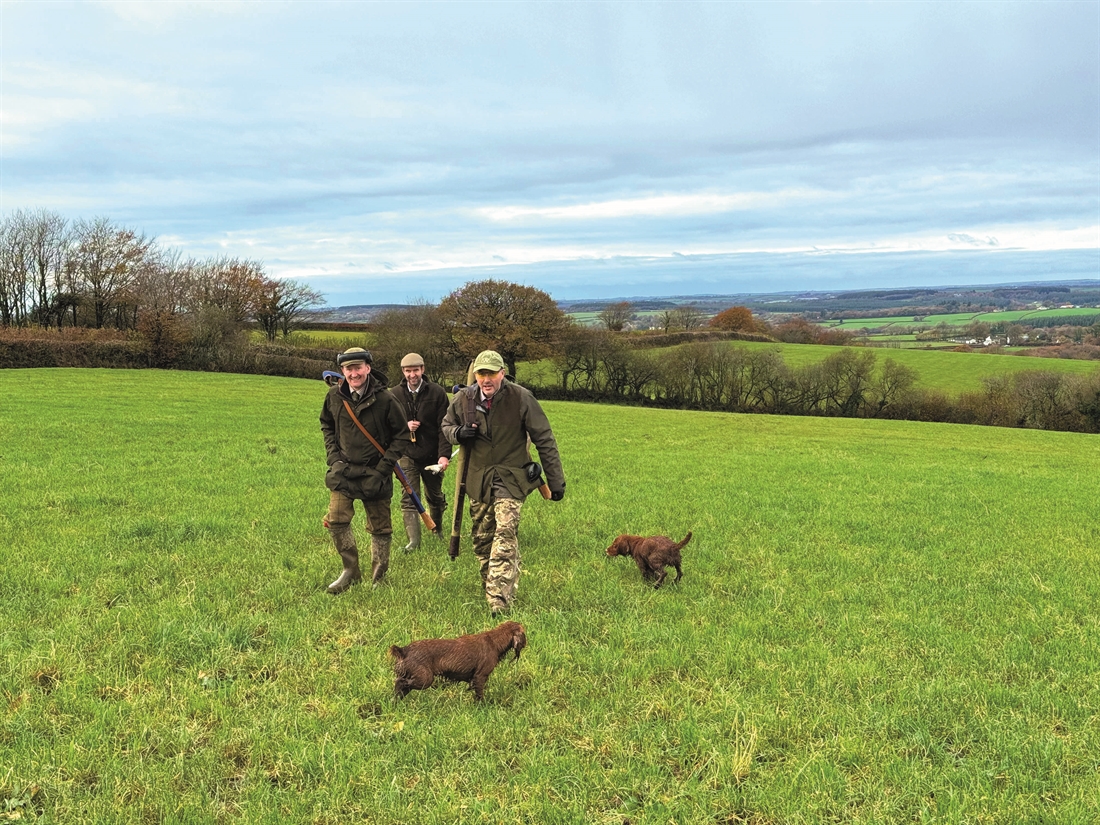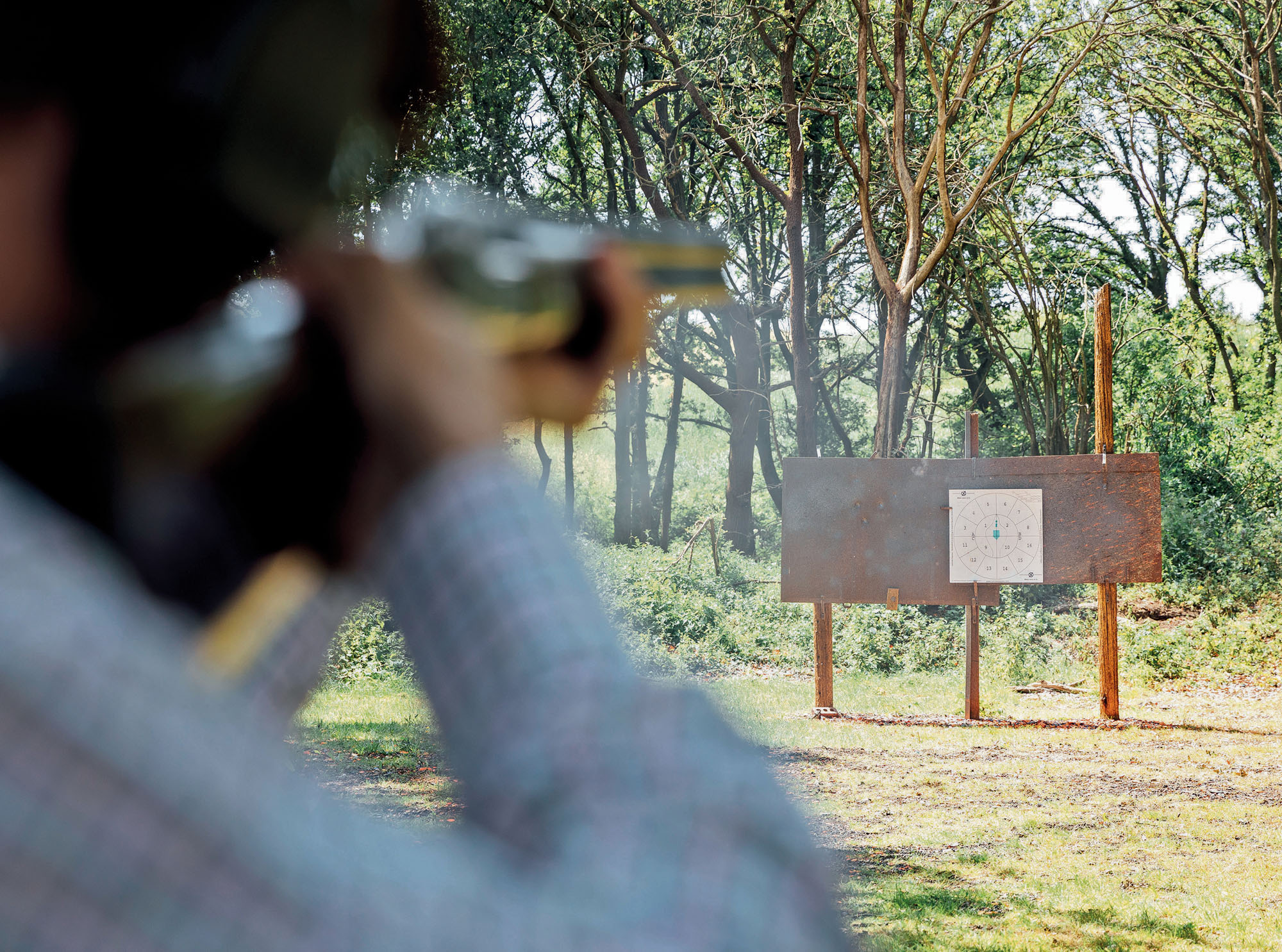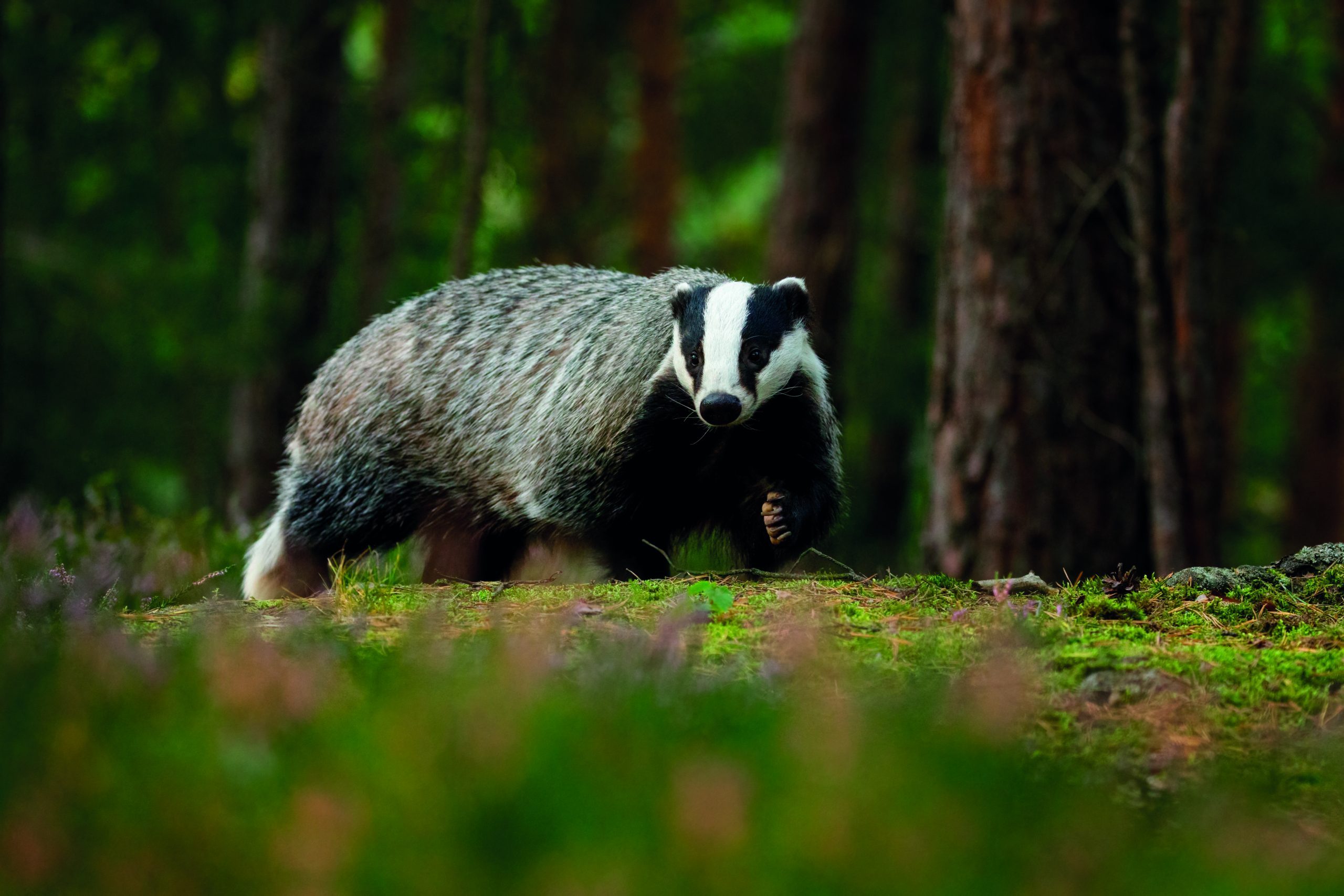Snipe in Devon
Dom Holtam travels to the Tamar Valley in pursuit of some spectacular, sustainable snipe shooting

I am hunched in the lee of a typically stout and impenetrable Devon hedge, gun at the ready, anticipation off the charts… Suddenly the whip-crack of a beater’s flag cuts through the morning mizzle, strangely amplified through the electronics of my ear defenders. A second later comes a shout of “Over!” I swiftly rise from my crouch, but only just in time to see a pointy- winged blur jink left, then right, then gone. The gun never even makes it to my shoulder and there is a sudden realisation that I’m going to have to be seriously on my mettle if I’m to manage to bag anything more than fresh air today.
I’m in south Devon – the Tamar valley and its environs – in pursuit of snipe. I’ve seen snipe before on shoot days and I’ve even shot them. But the concept of a driven day on them was hard to grasp in the context of my experience of traditional driven game shooting. Fortunately we have the wonderful Jeff Reynolds, a lifelong keeper and deer manager, taking charge of us – and he’s been doing this for years.
Our focus, he explains, is predominantly the deserted dairy pastures in the local area. With the cattle in for the winter, the grass short (but not too short), the earth wet and plenty of cow pats rich with invertebrates,
it’s a perfect environment for snipe. There are a few boggy moors and valleys that will be on the roster, too. Wild places, largely undisturbed.
This is not a typical driven shoot day, of course. Jeff aims to get through 10 or more ‘drives’ and we will cover plenty of ground during the course of the day. The basic routine is to walk from an access point towards the intended pasture, line the guns out quietly using the cover of the hedgerows to shield the sharp-eyed quarry from our presence, and then wait until the dogs and beaters are in position.
Generally any snipe will lift at the first cracks of the flags, so we need to be ready and focused. Anything from a few to a few dozen snipe will be pushed overhead: hesitate and they’ll be gone. Occasionally a speedy reload may yield a second chance if the birds are in good numbers. A typical gun can expect to bag a snipe for every 10 cartridges fired.
Our expectations for the first day have been tempered by a stormy night that brought a gale of wind and several hours of heavy rain. Jeff is worried that this will have affected the numbers we see today. “But we’ll get some chances,” he grins, as we head off to the next drive.
My peg sees me standing in a muddy gateway with a stream of water washing over my boots. Fellow guns (we are six today, but eight or 10 would be better to cover more escape routes for the birds) are lined out either side, with my spot marking the corner of the field being driven.
The bulk of the snipe break over the end of the line to my right but one bird abruptly changes course and follows the hedge, evading my neighbour and straightening up at last, holding a line long enough for me to take it as an overhead driven bird that folds and falls just a couple of yards behind my shoulder. My first Devon snipe!
One piece of advice I would offer is to mark any shot birds as thoroughly and accurately as possible. It is remarkably easy to misjudge where they fall and then waste a precious 10 or 20 minutes searching after the drive when you could be loading up and heading for the next drive of the day.
In terms of preparation, your average sporting clays are probably not the best way to sharpen up your skills. Perhaps if your local ground is fortunate enough to have a grouse butt to build some gun speed, or better still some Helice targets to try and mimic that erratic flight pattern, they would be worth a try.
I took my faithful Browning 525, which serves duty on clays, game days and any other shotgun shooting I might do. I know it and trust it, but in all honesty, it’s 32” barrels were not ideal for this kind of shooting. A 28” version would be better and my fellow guns were using light, wieldy side-by-sides that seemed well-matched to the snap-shooting we were faced with.
In terms of chokes and cartridges, light and open is the order of the day. These are small birds and as a result they often look quite high, but in fact generally the ranges are relatively close. So 28g of 7 or 7.5 shot through quarter (or even skeet) chokes is just the ticket. A box of steel or other non-toxic loads in the cartridge bag is also essential as Jeff will also be on the lookout for any ducks and geese.
We stop halfway through the day for a pasty and a drink out of the back of the trucks and enjoy the spectacular scenery. The small beating team and their dogs (mostly tireless cockers) are as always integral to the success of the day. The ability to turn the birds and funnel them over the gun line is something that comes with experience and it is clear they are enjoying the day.
My favourite drive comes at the end of the day, with the guns pegged at the high edge of a bowl of ground. By finding a little gap in the hedge I am able to see the beaters line out, the dogs working and the birds flush – the full drama playing out. There are shots to my right as several birds make for the end of the line before I spot a singleton make its way straight towards me. I keep as low as possible until as late as possible before taking it with my second barrel.
In the evening we are served up a fabulous game feast back at the hotel, with the snipe from the day as the opening act. Snipe are just as highly prized as a table bird as they are a quarry. Traditionally roasted whole, guts in, they were a favourite of Sir Winston Churchill, who reportedly demanded a brace of snipe and a pint of port for breakfast on a flight to the US in the 1950s.
Ours were perfectly pan fried and served on toasted brioche with a little foie gras and washed down with a Monbazillac. I think Churchill would have approved. There followed a carpaccio of venison, partridge with pickled pears and a ballotine of pheasant to make a true celebration of local game. Wonderful.
The snipe drives are the main focus of our visit, but we do top and tail our second day’s sport in pursuit of wild ducks. The first drive takes in an overgrown stream with a small pond at the top. After a stealthy approach and some top flagging from Jeff, a handful of teal starburst over the trees and I manage to take a lovely drake. Moments later a roe buck and doe break cover just a few yards away, the distraction of which allows a lone woodcock to sneak past the far end of the gun line.
We then switch back to snipe on a lovely little rough moor that yields plenty of snipe and a woodcock that is expertly pulled down by one of the guns. I only have a single chance as one bird leaks out of the side of the drive and my neighbour and I share the bird. Another drive sees 10 or more birds burst between my peg and the next, but the surfeit of choice scrambles my brain and
I miss everything! Fortunately, a final bird breaks cover late in the drive and I add that to the tally.
I’ve been genuinely amazed by the number of snipe we have seen through the day, the vast majority of which escaped the attention of the gun line. Jeff explains that the volume of birds locally is high, while the number that get shot through the course of the season very low. It’s properly wild and sustainable shooting.
The last drive of the day sees us hunkered along the steep sides of another stream as some mallard are pushed down from a pond further up. They follow the line of the stream and suddenly the gloaming erupts with gunfire and muzzle flashes. Two ducks plop down but this time I miss two good opportunities as the remaining birds shear off to my right, silhouetted against the clouds in the last of the twilight.
The bag at the end of the second day consists of seven brace of snipe, a woodcock, a few teal and a brace of mallard. Every bird earned, every shot remembered and every single one destined for the pot.
As the rain sweeps in from the Atlantic and the light fades I head back up the M5 on the long drive home, feeling more contented than I can remember being for a long while. It’s good for the soul, this kind of shooting. Sporting, sustainable, sociable, affordable… I love it. And I’ll be back.






